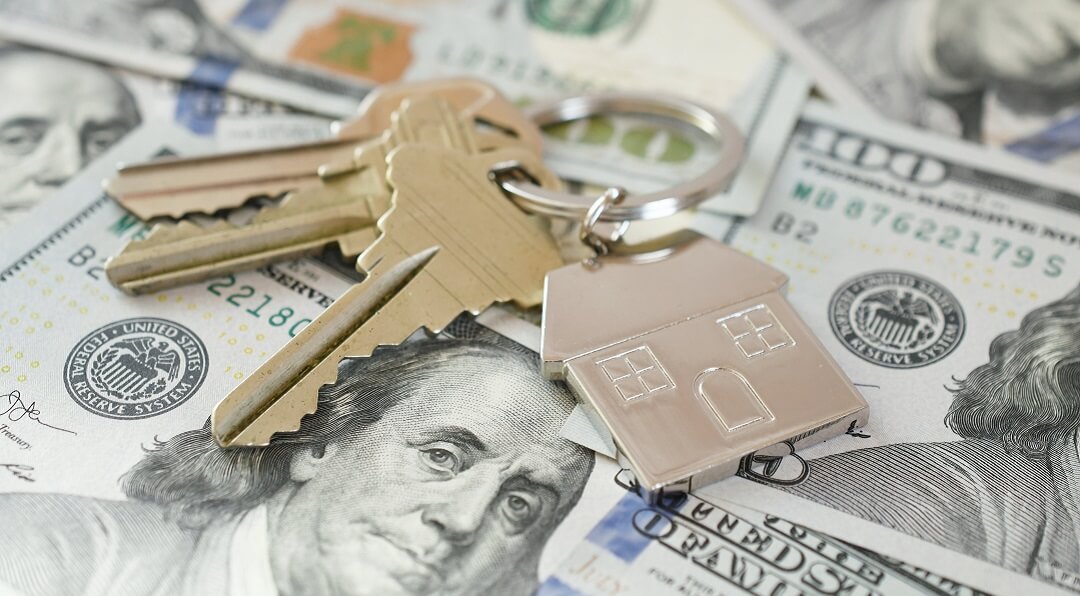When you are looking to purchase a home, you may consider different loan types, one of which is an interest-only mortgage. What are the benefits of interest-only mortgage loans? What are the disadvantages? When should you consider an interest-only loan?
Here we take a closer look at this loan type and how it may work to your advantage when purchasing a home.
What is an interest-only mortgage loan?
In simple terms, an interest-only loan is a mortgage where you pay just the interest for the first several years of the loan. In most cases, these payments last between three and ten years. It typically lowers your monthly mortgage payment during that period. However, once the interest-only period closes, your payments increase to include both the interest and the principle.
Most interest-only loans are adjustable-rate mortgages (ARM), so your interest rate can increase or decrease throughout both the interest-only and the remaining period. When the interest-only period ends, your loan can either require a lump sum of payments or continue with regular monthly payments that include both the interest and principal balance.
To get a better understanding, let’s look at a basic example:
If your mortgage is on $100,000 with an interest-only ARM at 5% and an interest-only loan period of ten years, you will have a monthly interest-only payment of $417 for the first ten years. When the interest-only period ends, your payment will then include the principal and interest and raise substantially. Keep in mind that if you had a 30-year loan, the principal is now amortized over 20 years instead of 30.
Advantages of an interest-only mortgage loan
Interest-only loans can make good financial sense for buyers in a wide range of different situations. Benefits can include:
- Increasing income: If you are anticipating a substantial increase in income before the end of the interest-only period, this type of loan could allow you to purchase a larger home you know you can afford after the income increase.
- To qualify for a larger home: Because your first payments will be lower during the interest-only period, you may qualify for a larger, more expensive home than you would with a conventional loan.
- Rising home prices: Using this type of loan may allow you to purchase a home before prices rise while still allowing you the time to prepare for the increase in payments after the interest-only payment period ends. It also allows you to buy before the home prices increase, meaning you will gain equity in the home before you begin paying the principal and can refinance later.
- Investment strategy: During the interest-only period, the money that would go toward the principal can be invested elsewhere to get a higher return.
- Tax deductions: As the payments are all interest during the initial period, they are completely tax-deductible.
Pay the equity on your schedule: You can pay the equity down on your schedule during the interest-only payment period, allowing you to decrease your payments when that period ends.
Disadvantages of an interest-only mortgage loan
While there are many times that this type of mortgage loan is beneficial, there are some disadvantages that can create problems when the interest-only period ends. These can include:
- Rising interest rates are possible with an ARM.
- If you plan to invest the principal payment amounts during the interest-only period, you risk losing or spending the money instead of investing.
- Changes in your situation may leave you unable to afford the larger payments when the interest-only period ends.
- The housing market may decline, and you may not experience the home appreciation you expected. In some cases, the loan balance may be higher than the home’s value, making it impossible to refinance the loan.
Types of interest-only home loans
Interest-only loans are also known as exotic loans, exotic mortgages, and are sometimes referred to as subprime loans. While they were never targeted to those with subprime credit, they did play a large role in the subprime mortgage crisis years ago. For this reason, many interest-only loans of the past are no longer used. There are, however, still interest-only mortgages available that can benefit some home buyers.
Jumbo mortgages
Jumbo mortgages are necessary for home loans that exceed the limits set by the Federal Housing Financing Agency (FHFA). While conforming loan limits can vary by state, as of 2022, the upper limit is currently $647,200. Adding the interest-only to these large loans can allow wealthy buyers to maintain larger returns in the financial markets instead of the mortgage principal. However, to qualify for these jumbo interest-only loans, high qualification standards must be met.
Interest-only home equity lines of credit (HELOC)
Interest-only home equity lines of credit, or HELOCs, are second mortgages that work like credit cards where you borrow against the equity in your home. For example, they are often set up where you can use the credit line as needed during the first ten years while only paying the interest. At the end of the 10-year period, the credit line is closed, and your remaining payments over the next 20 years cover the interest and principal.
30-year interest-only mortgages
These are similar to a conventional 30-year mortgage, with the main difference being you only pay interest payments for the initial period (between 3-10 years). However, because the principal is not paid down during the initial period, monthly principal payments are higher for the remaining 20 years than they would be in a conventional 30-year mortgage. To qualify for these loans, lenders typically require a higher down payment and charge higher interest rates due to the increased risk they are taking with the loan.
Can an interest-only loan benefit you?
While an interest-only mortgage loan can be beneficial for a lot of buyers, it is definitely not for everyone.
At Hero Home Programs, we can help you navigate the home buying and lending process and help you determine if this is a good option for you or if better programs exist to help you achieve your homeownership goal. To learn more about your home loan options, visit Hero Home Programs online today.
Benefits of Interest-Only Mortgage Loan was first seen on https://herohomeprograms.com
Original post here: Benefits of Interest-Only Mortgage Loan



